Ever since ancient times, humans have gazed up at the night sky, searching for meaning in the sparkling expanse above. Among the multitude of celestial wonders, one constellation has captured the imagination of countless civilizations: Ursa Major, the Great Bear. This enigmatic constellation, also known as the Big Dipper, is a prominent feature in the Northern Hemisphere’s night sky. Its iconic shape and non-zodiac stars have inspired countless myths, legends, and scientific curiosity. Join us on a journey as we delve into the mysteries of Ursa Major, exploring its prominent non-zodiac stars, uncovering its rich mythology, and discovering its scientific significance. Get ready to embark on a celestial adventure through the captivating world of the Great Bear.
Contents
- What is Ursa Major?
- The Prominent Non-Zodiac Stars of Ursa Major
- Legends and Mythology
- Scientific Significance
- Exploring Ursa Major’s Deep-Sky Objects
- How to Locate Ursa Major in the Night Sky
- Conclusion
-
Frequently Asked Questions
- What is the significance of Ursa Major in different mythologies?
- How many stars make up Ursa Major?
- What is the role of Ursa Major in navigation?
- Are there any deep-sky objects in Ursa Major?
- Can I see Ursa Major in both hemispheres?
- How can I locate Ursa Major in the night sky?
- What are the names and meanings of the stars in Ursa Major?
- Are there any ancient astrological artifacts associated with Ursa Major?
- What is the distance of Ursa Major from Earth?
- What is the scientific research conducted on Ursa Major?
- References
-
Frequently Asked Questions
- 1. Can I see Ursa Major with the naked eye?
- 2. How many stars are there in Ursa Major?
- 3. Are the stars in Ursa Major part of the zodiac?
- 4. Is Ursa Major visible all year round?
- 5. How far away is Ursa Major from Earth?
- 6. Can I spot any deep-sky objects in Ursa Major?
- 7. What is the scientific significance of Ursa Major?
- 8. Are there any myths or legends associated with Ursa Major?
- 9. Can I use Ursa Major to find other constellations?
- 10. How can I locate Ursa Major in the night sky?
- References
- Read More
What is Ursa Major?
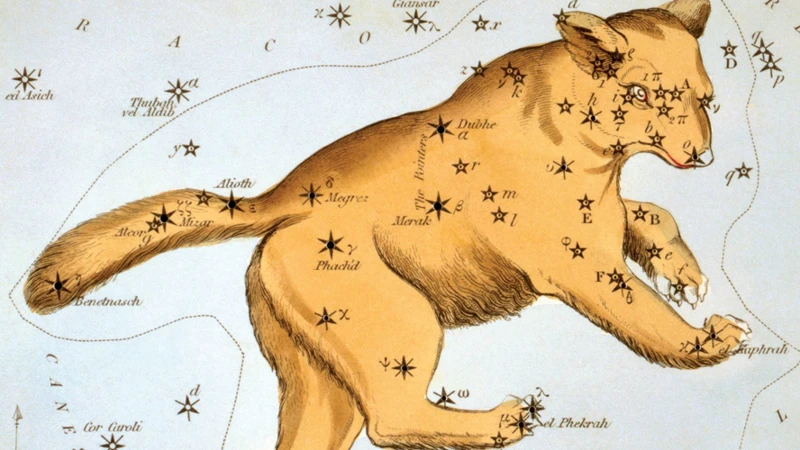
Ursa Major is a constellation that holds a prominent place in both mythology and astronomy. It is located in the northern celestial hemisphere and is visible throughout the year for observers in the Northern Hemisphere. The name “Ursa Major” translates to “Great Bear” in Latin, which aptly describes its appearance. This constellation is famous for its distinctive shape that resembles a large ladle or a wagon. Ursa Major is often recognized by its seven bright stars that form the Big Dipper, which is a part of the larger constellation. These stars, known as asterisms, have helped navigators and travelers find their way for centuries. The Big Dipper is easily identifiable by its four stars forming the bowl and three stars forming the handle, with each star having its own name and significance. The two stars at the end of the bowl, Dubhe and Merak, are often referred to as the “pointer stars” because they direct observers to the North Star, Polaris. The other stars in Ursa Major, such as Phecda, form the outline of the bear’s body. This constellation has a rich cultural history, appearing in various mythologies and folklore around the world. In Greek mythology, Ursa Major represents Callisto, a nymph who was transformed into a bear by the goddess Hera. The constellation also holds scientific significance, as it contains several notable deep-sky objects, including galaxies, nebulae, and star clusters, that have fascinated astronomers for centuries. Ursa Major is a celestial wonder that continues to captivate and inspire observers to this day.
The Prominent Non-Zodiac Stars of Ursa Major
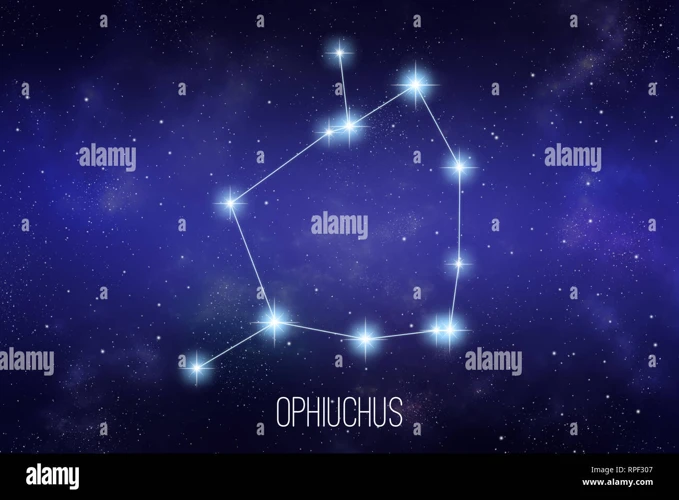
Ursa Major, the Great Bear, is renowned for its prominent non-zodiac stars that contribute to its distinctive shape and allure. One of the most notable stars in Ursa Major is Dubhe, also known as Alpha Ursae Majoris. Dubhe holds a special significance as it is the second-brightest star in the constellation and one of the pointers that guides stargazers to the North Star, Polaris. Another prominent star in Ursa Major is Merak, which forms a stellar pair with Dubhe. Merak is the third-brightest star in Ursa Major and, alongside Dubhe, helps form the Big Dipper’s bowl. We have Phecda, a radiant star that adds to the constellation’s charm. Phecda, also known as Gamma Ursae Majoris, is the fourth-brightest star in Ursa Major and plays a vital role in delineating the bear’s shape. The intriguing arrangement of these non-zodiac stars in Ursa Major makes it a captivating constellation that has fascinated observers throughout history.
Dubhe: The Alpha Star of Ursa Major
Dubhe, also known as Alpha Ursae Majoris, is the alpha star of the Ursa Major constellation. It holds a prominent position in the night sky as one of the pointer stars that guide observers to the North Star, Polaris. Dubhe is classified as a spectroscopic binary star, meaning it appears as a single point of light but is actually a pair of stars orbiting around a common center of mass. The primary star, Dubhe A, is a giant star with a luminosity over 200 times that of our Sun. Its distinct orange hue makes it easily recognizable in the night sky. The secondary star, Dubhe B, is smaller and fainter, orbiting Dubhe A at a distance that varies over a period of about 44.6 years. Together, Dubhe A and Dubhe B form a fascinating binary system that provides valuable insights into stellar evolution and dynamics. Dubhe is approximately 123 light-years away from Earth and has a magnitude of 1.79, making it one of the brightest stars in the Ursa Major constellation. Its name, Dubhe, is derived from the Arabic word for “bear,” further connecting it to the Great Bear mythology. Dubhe’s prominence and unique characteristics make it a star of great interest and significance in both astronomy and mythology. For more information on ancient celestial artifacts, check out unearthing ancient astrological artifacts.
Merak: A Stellar Pair in the Great Bear
Merak, one of the prominent non-zodiac stars in Ursa Major, is an intriguing stellar pair that adds to the constellation’s allure. Also known as Beta Ursae Majoris, Merak is located at the end of the Big Dipper’s handle, opposite to the pointer star, Dubhe. This binary star system consists of two stars orbiting around their common center of mass. The primary star, Merak A, is a magnitude 2.37 blue-white giant star, while the secondary star, Merak B, is a magnitude 13.6 companion star. These stars, though visually close together from our perspective, are actually quite distant from each other in space. The distance between them is approximately 31 astronomical units, which is about the same as the distance between Neptune and the Sun in our solar system. This stellar pair is estimated to be around 79 light-years away from Earth. The name “Merak” is derived from the Arabic word for “loin” and refers to the bear’s hindquarters in Middle Eastern culture. In ancient times, Merak and Dubhe served as navigational tools, guiding travelers and seafarers across the seas. They point towards Polaris, the North Star, which remains almost motionless in the night sky and has been used as a reference point for navigation throughout history. The significance of Merak goes beyond its navigational use. Astronomers have studied its physical characteristics, such as its temperature, composition, and luminosity, to gain insights into stellar evolution and the formation of binary star systems. Merak continues to fascinate both amateur stargazers and professional astronomers alike, reminding us of the vastness and beauty of the universe.
Phecda: A Radiant Star in Ursa Major
Phecda, also known as Gamma Ursae Majoris, is a radiant star that shines brightly in the constellation of Ursa Major. It is part of the famous asterism, the Big Dipper, and is one of the stars that form the outline of the bear’s body. Phecda holds a significant place in the night sky, both for stargazers and astronomers. This star is classified as a giant star, belonging to the spectral class A0III. With a magnitude of around 2.44, Phecda is one of the brighter stars in Ursa Major. Its distinctive bluish-white hue adds to its allure and makes it easily distinguishable from the other stars in the constellation. Phecda is located approximately 84 light-years away from Earth, and its luminosity is estimated to be around 105 times that of our sun. It has a diameter more than four times that of the sun and rotates rapidly, completing a full rotation in just a few days. This speedy rotation causes Phecda to have a slightly flattened shape. While Phecda may not be as well-known as some of the other stars in Ursa Major, it still holds a special place in our exploration of the cosmos. Its radiance and unique characteristics make it a captivating sight in the night sky. Its role in the constellation adds to the wonder and beauty of Ursa Major, making it a celestial spectacle to behold.
Legends and Mythology
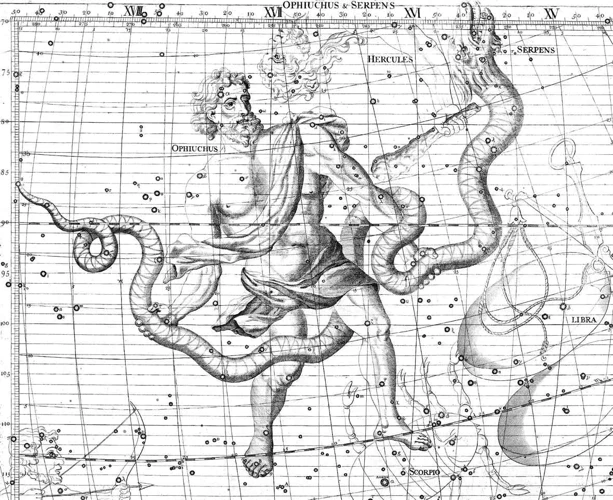
Legends and mythology surrounding Ursa Major have been passed down through generations, spanning various cultures and civilizations. One of the most well-known stories featuring Ursa Major comes from Greek mythology, where it is associated with the tale of Callisto. According to the myth, Callisto, a nymph who served in the retinue of the goddess Artemis, caught the attention of Zeus, the king of the gods. Zeus, disguising himself as Artemis, seduced Callisto, resulting in her pregnancy. When Artemis discovered the truth, she was furious and transformed Callisto into a bear. Eventually, Callisto’s son, Arcas, unknowingly almost killed her while hunting. To prevent this tragic incident, Zeus intervened and transformed Arcas into a bear as well, placing them both in the heavens. Thus, Ursa Major and Ursa Minor, the Little Bear, were created. This myth explains the presence of two prominent constellations in the night sky. Ursa Major’s association with bears extends beyond Greek mythology. Native American tribes also have their own folklore that connects these stars to bears. The Haudenosaunee tribe sees the Big Dipper as the celestial representation of a bear hunter, while other tribes associate Ursa Major with the bear itself. In various Scandinavian mythologies, Ursa Major is considered the hindquarters of the great Norse sky bear, with the star Alkaid representing its tail. These captivating legends and myths showcase the enduring fascination and cultural significance of Ursa Major throughout history.
Scientific Significance

The scientific significance of Ursa Major goes beyond its cultural and mythological connections. Astronomers have long been intrigued by this constellation due to its rich collection of deep-sky objects. One notable feature within Ursa Major is the M81 spiral galaxy. Located approximately 12 million light-years away from Earth, M81 is a stunning sight with its grand spiral arms and bright nucleus. This galaxy provides astronomers with valuable insights into the structure and evolution of spiral galaxies. Another fascinating object within Ursa Major is the Whirlpool Galaxy, also known as M51. This galaxy is famous for its spiral arms and the presence of a smaller companion galaxy called NGC 5195. The interaction between these two galaxies has stirred scientific curiosity as it offers a remarkable opportunity to study galactic interactions and the formation of new stars. Ursa Major is also home to the Owl Nebula, designated as M97. This planetary nebula showcases a unique pattern that resembles the eyes of an owl, hence its name. Studying planetary nebulae like M97 aids scientists in understanding the late stages of stellar evolution. The constellation contains numerous star clusters, including M40 and M81. These clusters consist of a group of stars that formed from the same molecular cloud. By studying star clusters, astronomers gain valuable insights into the formation and dynamics of stellar systems. The scientific significance of Ursa Major lies in its contribution to our understanding of cosmic phenomena and the vastness of the universe. Exploring the deep-sky objects within this constellation allows astronomers to unlock the secrets of galaxies, nebulae, and clusters, shedding light on the processes that shape our universe.
Exploring Ursa Major’s Deep-Sky Objects
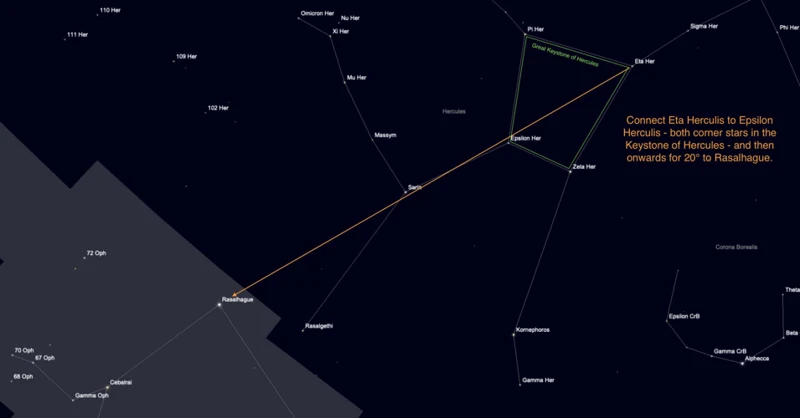
Exploring Ursa Major’s deep-sky objects unveils a treasure trove of celestial wonders that have fascinated astronomers throughout history. This constellation is home to several notable deep-sky objects, including galaxies, nebulae, and star clusters. One of the most famous objects in Ursa Major is Messier 81, also known as Bode’s Galaxy. This grand spiral galaxy is located about 12 million light-years away from Earth and showcases beautiful spiral arms and a bright central core. Another notable galaxy is Messier 82, commonly referred to as the Cigar Galaxy due to its elongated shape. It is located in close proximity to Messier 81 and is known for its intense starburst activity, resulting in vibrant regions of star formation. Ursa Major is also home to a fascinating collection of globular clusters, such as Messier 13, also known as the Great Hercules Cluster. This cluster contains hundreds of thousands of stars tightly packed together in a spherical shape, creating a stunning visual spectacle. Additionally, Ursa Major hosts a few planetary nebulae, including Messier 97, also known as the Owl Nebula. This nebula showcases a unique shape resembling the eyes of an owl, hence its name. Exploring these deep-sky objects in Ursa Major offers a glimpse into the vastness and beauty of our universe, reminding us of the wonders that lie beyond our own planet. So, grab a telescope and venture into the cosmic realm of Ursa Major’s deep-sky objects for a truly awe-inspiring experience.
How to Locate Ursa Major in the Night Sky
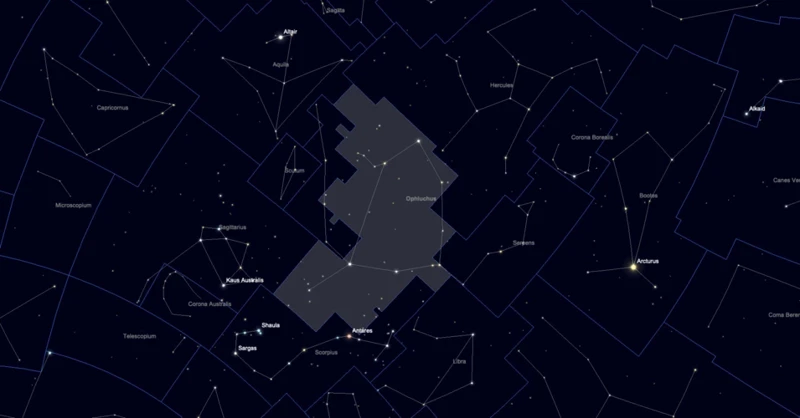
To locate Ursa Major in the night sky, you can follow a few simple steps. First, find a location with minimal light pollution, as this will enhance your ability to see the stars. Once you’re in a suitable spot, identify the North Star, Polaris, which is part of the constellation Ursa Minor. Polaris can serve as a helpful guide to finding Ursa Major. Next, look towards the northern horizon and visualize an imaginary line connecting Polaris and the horizon. This line will guide you to Ursa Major, as the constellation is located near the celestial North Pole. Once you’ve located Polaris and imagined the line, look for the iconic Big Dipper shape within Ursa Major. The two stars at the end of the bowl of the Big Dipper, called Dubhe and Merak, point towards Polaris and are useful reference points for finding the constellation. The Big Dipper in Ursa Major acts as a celestial signpost, assisting stargazers in locating other stars and constellations. Uncover the secrets of ancient Roman architecture or explore the fascinating world of Celtic mythology for further inspiration during your stargazing adventures. Remember, practice and patience are key when it comes to locating Ursa Major and deciphering the vastness of the night sky.
Conclusion

In conclusion, Ursa Major, the Great Bear, is a constellation that holds a special place in both cultural mythology and scientific exploration. Its distinctive shape, formed by the seven bright stars of the Big Dipper, has captivated and guided observers for centuries. The constellation’s prominent non-zodiac stars, including Dubhe, Merak, and Phecda, have played a significant role in navigation and have led to the discovery of other celestial objects. Ursa Major’s rich mythology has been woven into various cultures and has added to the allure and fascination of the night sky. From the Greek myth of Callisto to its representation in other folklore, the Great Bear continues to inspire and intrigue. Additionally, Ursa Major’s scientific significance cannot be overlooked, as it is home to numerous deep-sky objects that have expanded our knowledge of the universe. Whether it’s exploring the constellations, uncovering legends, or peering into distant galaxies, Ursa Major invites us to gaze at the stars with wonder and curiosity. It reminds us of the vastness and mystery that lies beyond our earthly realm and encourages us to continue unraveling the secrets of the cosmos. So next time you gaze up at the night sky, take a moment to appreciate the grandeur of Ursa Major and all the wonders it encompasses.
Frequently Asked Questions

What is the significance of Ursa Major in different mythologies?
Ursa Major holds significance in various mythologies around the world. In Greek mythology, it represents the transformed nymph Callisto, who was turned into a bear by the goddess Hera. In Native American cultures, the constellation is often associated with a bear who plays a role in their creation stories. Similar bear mythologies can be found in other indigenous cultures as well.
How many stars make up Ursa Major?
Ursa Major consists of several stars, but the most prominent ones are the seven stars that form the Big Dipper. These stars are often referred to as asterisms and are recognizable for their distinctive shape that resembles a ladle or wagon.
Ursa Major has played a significant role in navigation throughout history. The two stars at the end of the Big Dipper’s bowl, Dubhe and Merak, are known as the pointer stars because they point towards the North Star, Polaris. By following the line created by these two stars, navigators can determine their northward direction.
Are there any deep-sky objects in Ursa Major?
Yes, Ursa Major is home to several notable deep-sky objects. One of the most famous is the Whirlpool Galaxy (M51), a stunning spiral galaxy that can be observed with a telescope. Other deep-sky objects include the Owl Nebula (M97) and the Pinwheel Galaxy (M101), which offer breathtaking views to stargazers.
Can I see Ursa Major in both hemispheres?
No, Ursa Major is primarily visible in the Northern Hemisphere. It may be visible low on the horizon in certain regions of the Southern Hemisphere, but it is not as prominent.
How can I locate Ursa Major in the night sky?
Locating Ursa Major is relatively easy, even for beginner stargazers. Look for the Big Dipper, which is the most recognizable part of the constellation. It is located in the northern part of the sky and can be seen all year round for observers in the Northern Hemisphere.
What are the names and meanings of the stars in Ursa Major?
The seven stars that form the Big Dipper in Ursa Major have individual names and meanings. Dubhe, the star at the top of the bowl, means “bear” in Arabic. Merak, the star at the bottom of the bowl, means “loin” or “the flank of an animal.” Phecda, which forms part of the bear’s body, means “thigh” in Arabic.
Are there any ancient astrological artifacts associated with Ursa Major?
Ancient astrological artifacts related to Ursa Major have been discovered, providing insights into early astronomical practices. These artifacts include celestial maps and depictions of Ursa Major found in ancient civilizations, highlighting the significance of this constellation in their beliefs and astronomical observations.
What is the distance of Ursa Major from Earth?
The stars in Ursa Major are at varying distances from Earth. Dubhe, the alpha star, is approximately 124 light-years away, while Merak, the beta star, is around 79.7 light-years away. These distances give us a glimpse into the vastness of space.
What is the scientific research conducted on Ursa Major?
Ursa Major has been a subject of scientific research and exploration. Astronomers have studied the movement, composition, and interaction of stars within the constellation to gain a deeper understanding of stellar evolution and the formation of galaxies. This research helps us unravel the mysteries of the universe and expand our knowledge of celestial objects.
References
- Ursa Major
- Ursa Major the Great Bear, home to the Big Dipper
- Ursa Major Constellation — A guide to the Big Bear
Frequently Asked Questions

1. Can I see Ursa Major with the naked eye?
Yes, Ursa Major is easily visible with the naked eye. It is one of the most prominent and recognizable constellations in the northern hemisphere.
2. How many stars are there in Ursa Major?
Ursa Major contains a vast number of stars, but its seven brightest stars form the distinct shape of a “Big Dipper” or “Plough” pattern.
3. Are the stars in Ursa Major part of the zodiac?
No, the stars in Ursa Major are not part of the zodiac. They are located in the constellation Ursa Major, which is separate from the zodiac constellations.
4. Is Ursa Major visible all year round?
Yes, Ursa Major is circumpolar, which means it remains visible in the night sky throughout the year in the northern hemisphere. However, its visibility may vary depending on your location.
5. How far away is Ursa Major from Earth?
The distance to Ursa Major varies for each individual star within the constellation. The average distance to the stars in Ursa Major is approximately 81 light-years.
6. Can I spot any deep-sky objects in Ursa Major?
Yes, Ursa Major is known for its abundance of deep-sky objects. Some famous ones include the Pinwheel Galaxy (M101), M81 and M82 galaxies, and the Owl Nebula (M97).
7. What is the scientific significance of Ursa Major?
Ursa Major has been instrumental in various scientific studies, such as stellar evolution and galactic dynamics. Its stars serve as reference points for astronomers to understand the vastness of the universe.
8. Are there any myths or legends associated with Ursa Major?
Absolutely! Ursa Major has great significance in different mythologies across the world. Many cultures saw it as a celestial bear or a hunting dog, and the constellation often appeared in tales and legends.
9. Can I use Ursa Major to find other constellations?
Yes, Ursa Major can be used as a guide to locate other constellations. By following the line from Dubhe to Merak in the Big Dipper’s handle, you can find the North Star (Polaris) in the constellation Ursa Minor.
10. How can I locate Ursa Major in the night sky?
Locating Ursa Major is relatively easy. In the northern hemisphere, simply look towards the north and search for the Big Dipper pattern. It is visible during most nights of the year.







